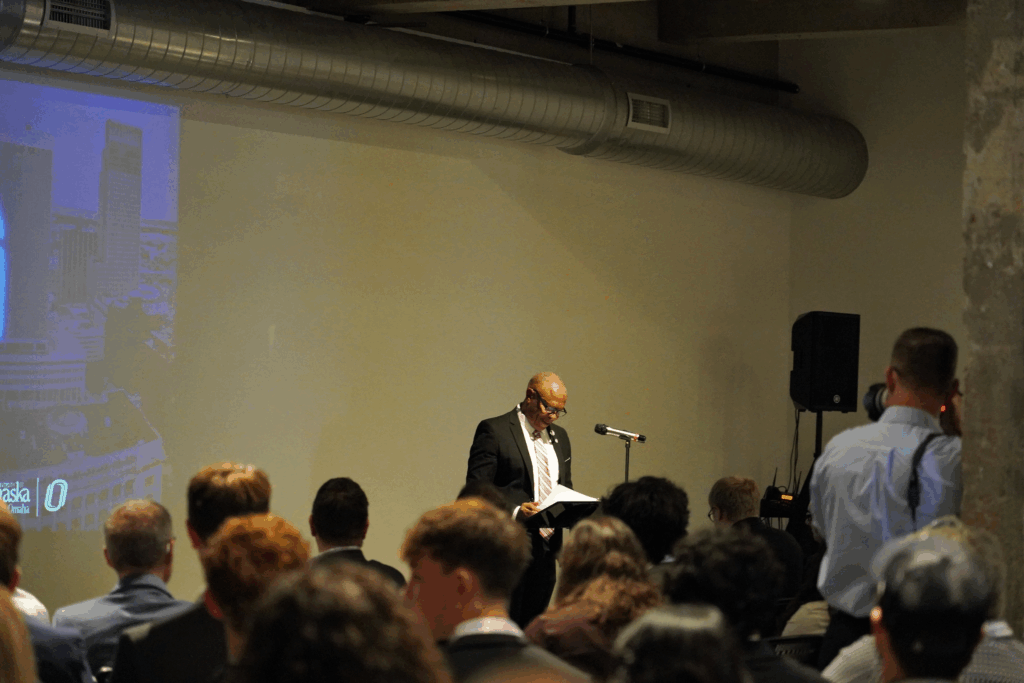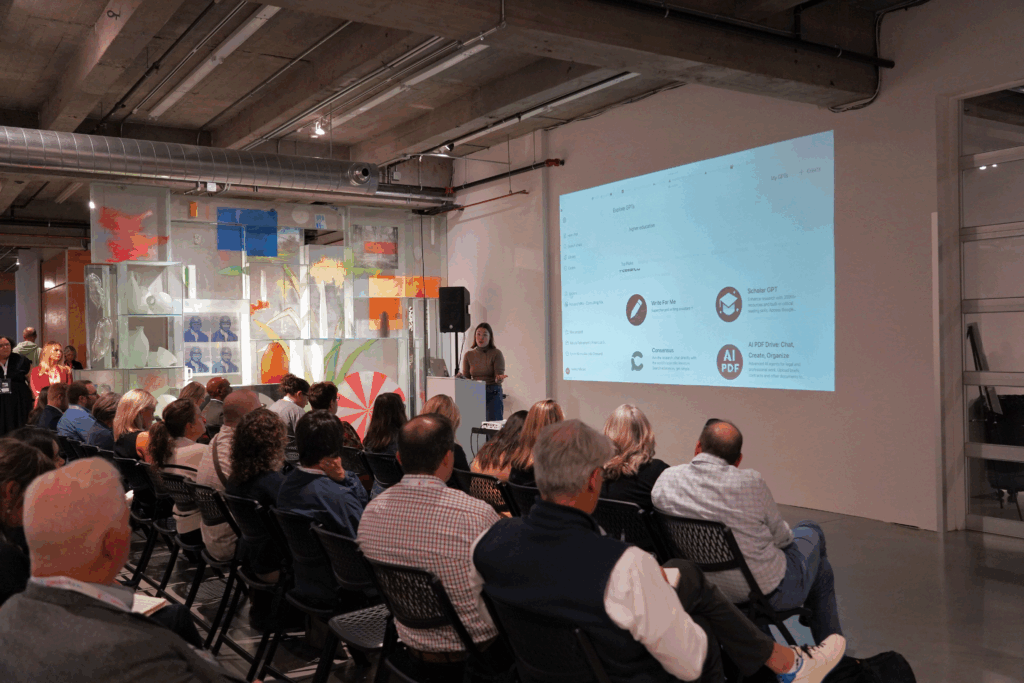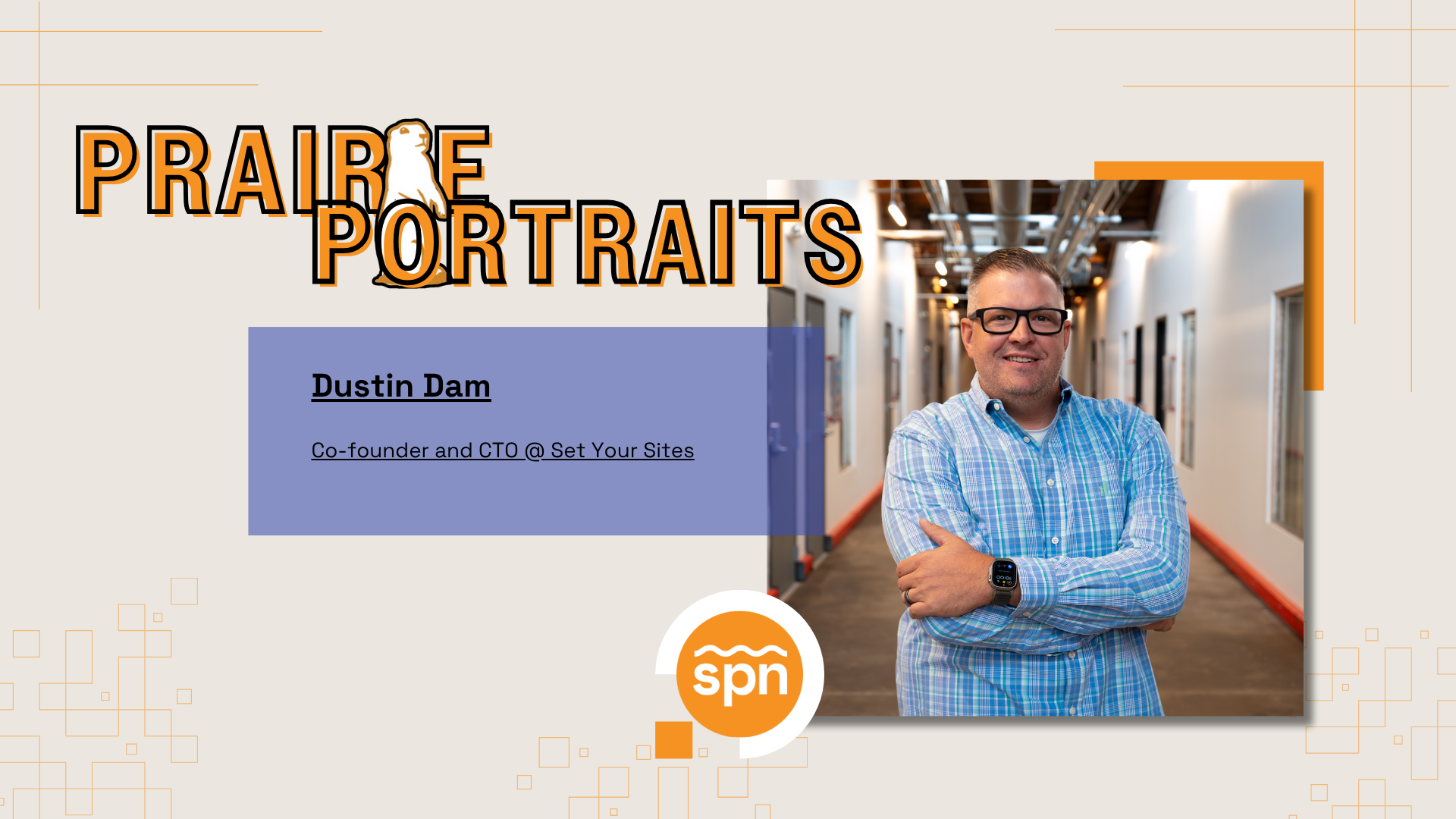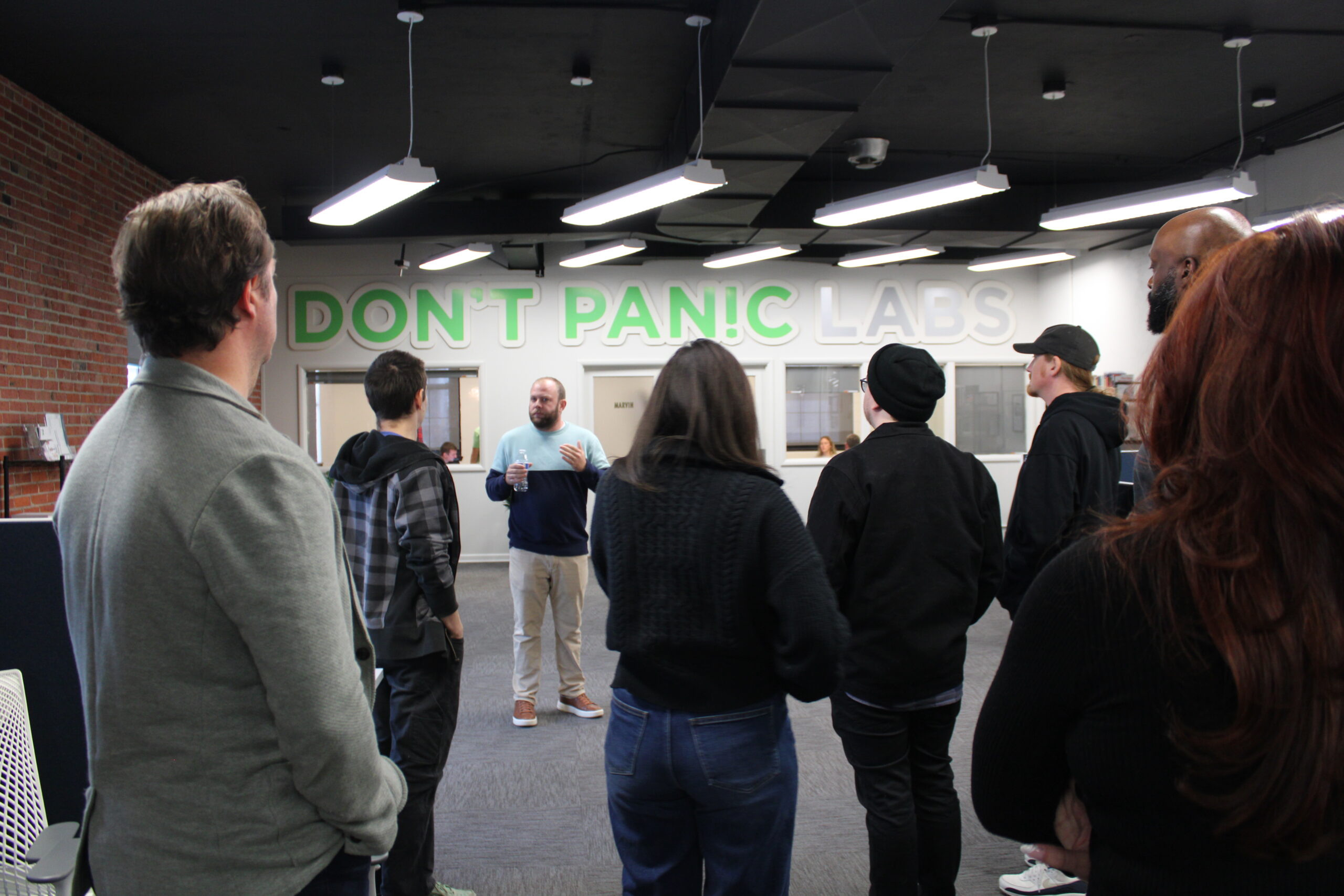Omaha’s civic, academic and business communities converged Oct. 7 at KANEKO for OMA x AI, a daylong conference exploring how artificial intelligence can strengthen the city’s workforce, drive innovation and expand opportunity.
Led by the University of Nebraska at Omaha, hosted in partnership with KANEKO, powered by the Greater Omaha Chamber and supported by Mayor John Ewing and the City of Omaha, OMA x AI was designed to make artificial intelligence accessible to everyone. The inaugural event reflected a shared mission to promote workforce development and social mobility through hands-on learning experiences focused on real-world applications rather than abstract theory.
“This (conference) isn’t about theory or high tech, this is about a city and how we as individuals are using it,” said Abbey Henrichs, UNO’s events director.
City and university leaders frame Omaha’s AI future
Ewing, who took office in June, opened the program by emphasizing the role AI can play in improving how Omaha serves its residents. He said the city intends to be proactive in exploring how artificial intelligence can support public safety, infrastructure and urban planning.
“It’s exciting to be part of this … I know where I want to take this city,” Ewing said. “I want us to be active. I want us to lead when it comes to AI and city government across all of our industries.”
UNO Chancellor Joanne Li, Greater Omaha Chamber President and CEO Heath Mello and Jeffrey Gold, president of the University of Nebraska System, also spoke about how Omaha’s public, private and academic sectors are aligning to prepare for an AI-driven economy. Li said the idea for the event originated during a dinner six months ago, when university leaders asked about how they could bring the city together around AI.

Gold noted that artificial intelligence has already been part of health care and higher education for years through diagnostic modeling, workflow automation and research analysis. “The only jobs AI will replace are those held by people who don’t know how to use it,” he said. “The single most important thing in this county, this state, this city is that we have the creativity — AI will never take that, it will strengthen what we have.”
Mello said AI is no longer an option but is an essential, and Omaha’s advantage lies in collaboration across sectors.
Breakouts focus on practical innovation
Throughout the afternoon, attendees moved between beginner, intermediate and advanced breakout sessions, each focused on applying AI in different contexts from business and health care to education and agriculture.
At a session titled “AI and Emerging Tech in Health Education,” presenters from the University of Nebraska Medical Center’s iEXCEL program showcased holographic anatomy models and virtual reality simulations enhanced by AI-generated feedback. The presenters showcased a 3D model of a heart-lung bypass machine, demonstrating how generative tools can enhance visualization and personalize training for medical students.
In another session, “Redefining Possible: How AI Creates Agency,” Erin Saxby of FNBO explained how the bank uses generative AI to augment employee expertise rather than replace it. She demonstrated FNBO’s internal AI assistant, Ivy, which supports employees by providing real-time research and compliance guidance. “We see AI not as automation for its own sake, but as a tool to amplify human judgment,” she said.
During Malign Use of AI, Joel Elson, a professor at UNO, discussed the risks associated with purpose-built and adversarial AI systems, including disinformation and cyberattacks. He highlighted the work of NCITE, a Department of Homeland Security Center of Excellence based at UNO, which develops tools and partnerships to address national security threats through AI-driven analysis.

In Physical AI in Agriculture, Jacob Hansen of ALA Engineering described how cyber-physical systems are bringing AI out of the cloud and into the feedlot. His company’s autonomous feeding technology combines sensors, software and edge computing to optimize efficiency, reduce labor risks and improve animal welfare. He said generative physical AI is still new, but it’s already showing how data and robotics can work together to solve everyday problems in agriculture.
Students demonstrate AI for social good
OMA x AI also featured a student competition, where UNO and UNMC students presented projects that merged technical innovation with community impact. Participants competed for scholarships of $1,000 for first place, $600 for second and $400 for third, with projects judged on creativity, feasibility and potential to address community needs.
First place went to Aditi Rai, a third-year student in information science and technology, for her AI-powered emergency department management system. Rai’s project focused on improving patient care, streamlining resource allocation and reducing staff strain in hospital settings. She said her goal is to combine her computer science training with a future career in emergency medicine to enhance patient outcomes and operational efficiency.
Second place was awarded to Jingxian Gu, a Ph.D. student in biomechanics, for her project, AI-powered avatars and home interventions for children with autism spectrum disorder. Gu’s research explores how virtual avatars and personalized AI systems can assist with communication, learning and rehabilitation for children on the autism spectrum.
Third place went to Narges Shakerian, a Ph.D. student in biomechanics, for her project, AI-powered escape rooms for interactive learning. Shakerian designed immersive, problem-solving environments that use AI to adapt challenges to each learner’s performance, encouraging critical thinking and engagement. She said she hopes to remain in academia, lead her own research team and train the next generation of scientists.
Other finalists included Athena Patsalis, a graduate student in counseling, who presented an AI-integrated mental health assistant designed to expand access to affordable care, and John O’Halloran, a doctoral student in public administration, who demonstrated AI-driven digital twins to model and test public policy outcomes before implementation.
Each student’s project reflected a commitment to using artificial intelligence to solve real-world problems, showcasing how Omaha’s next generation of innovators is building technology with purpose.
A collaborative roadmap for responsible adoption
Robin Gandhi, associate dean for research at UNO’s College of Information Science and Technology, described OMA x AI as “a convergence point” for Omaha’s creative and technical communities. He encouraged attendees to embrace AI as both a professional tool and a civic responsibility.
He said the city’s next challenge is to humanize artificial intelligence to use it responsibly, collaboratively and creatively and that Omaha has the opportunity to serve as a model for how AI can strengthen communities.
As the evening reception began, guests explored KANEKO’s galleries, engaging with generative tools, virtual reality exhibits and student projects, marking the end of an event centered on curiosity, collaboration and Omaha’s potential for innovation.




Leave a Reply